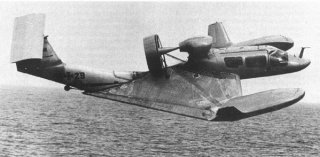RFB X-114 Could Have Been A Revolutionary Plane. Here's Why It Flopped.
This ground effect vehicle could land on water, fly just over the ocean surface, and fly like an airplane.
Ground effect vehicles take advantage of a flight phenomenon in which an aircraft at low altitude experiences lower drag and increased lift, in effect “floating” along the surface of the ground. Thanks to this odd phenomenon, ground effect vehicles can have much smaller wings than would be possible for normal fight at higher altitudes, though they are unable to reach altitudes much higher than a few dozen feet. While this restricts their use somewhat, ground effect vehicles have been used with some success, particularly by the Soviet Union in the 1970s and 1980s.
One notable example was the so-called Caspian Sea Monster, a nickname given by the CIA to an enormous ground effect vehicle built by the Soviet Union. As the name implies, the Caspian Sea Monster was used only on the Caspian Sea. For a time, the Caspian Sea Monster was both the largest and heaviest aircraft in existence and was propelled by eight massive engines.
RFB X-114
Ground effect vehicles are hindered by their low flight altitude. Over anything aside from relatively calm water, ground effect vehicles would easily crash and therefore mostly limited to lake patrol duty. The RFB X-114 was intended to be able to traverse rougher waters and possibly the open ocean by flying higher than previous ground effect vehicles.
While most ground effect vehicles have rather short and stubby straight wings, the X-114 used an interesting inverted delta wing design to provide more lift to reach higher altitudes. This unique wing shape, which seemingly pointed backwards, supported a small, centrally located cabin that extended past the wings’ leading edge and looked rather like a helicopter fuselage.
At the other end of the X-114, and conventional T-tail assembly extended past the point of the wing. Small winglets capped off both wings and provided lateral stability. A small-output engine powered a rear-facing pusher-style propeller assembly. Since the X-114 was intended to fly over land as well as water, it had landing gear that could be retracted when not in use. For a ground effect vehicle, the X-114 could reach an astonishing 800 meters, or about 2,600 feet in altitude.
Postscript
Despite the overall favorable capabilities displayed by the X-114, and an evaluation by the West German Ministry of Defense, the project was not further pursued. Still, ground effect vehicles may be making a comeback. According to the Russian Defense Ministry, a new aircraft, the Orlan ground effect vehicle, will be equipped with missiles and is apparently scheduled to undergo evaluations in the future. Who knows—maybe ground effect vehicles will rise again.
Caleb Larson is a defense writer for the National Interest. He holds a Master of Public Policy and covers U.S. and Russian security, European defense issues, and German politics and culture.

